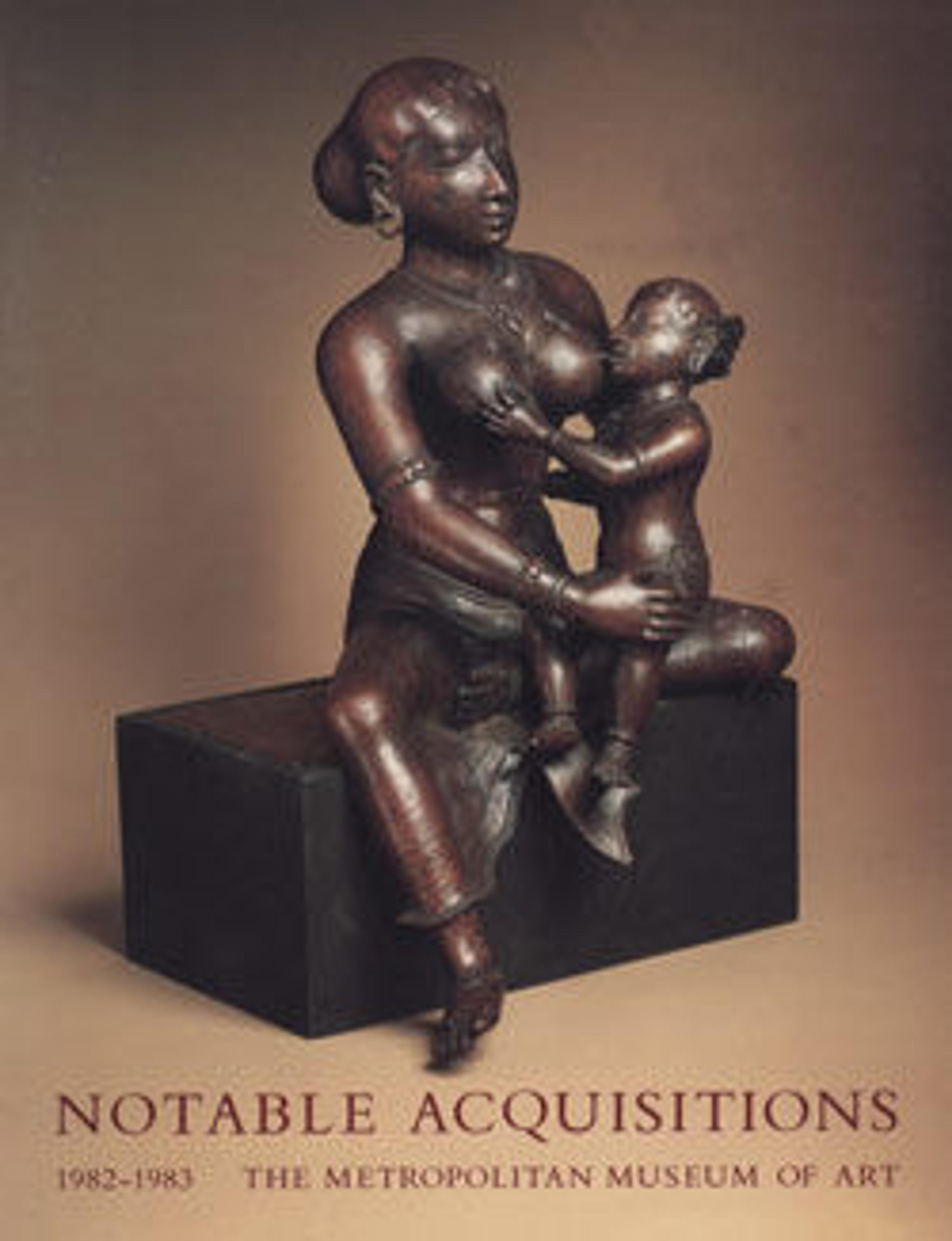Standing male figure
This standing male figure is a funerary or votive object intended to be placed in a tomb or temple. Dressed in a long, plain garment reaching almost to the ankles, the figure stands in a fully frontal pose. The base, which is carved in one piece with the figure, bears the name of the individual and his clan—Sadiqim Ma'ad. The eyes and eyebrows are carved to hold inlays, now missing, and the arms are bent at the elbows, extending out at right angles to the body. One hand is clenched in a fist, pierced vertically to hold some object, perhaps a scepter, now lost. The other hand is open. The undersurface of the base and the top and back of the figure's head are roughly carved. Such statues were often set in niches, and the surfaces not visible were consequently left unfinished on many examples. The placement of the ears high on the head, the aquiline nose, the small mouth, and the fully frontal pose are all characteristic of human images made in this region.
Artwork Details
- Title: Standing male figure
- Date: ca. late 1st millennium BCE
- Geography: Southwestern Arabia
- Medium: Alabaster (calcite)
- Dimensions: H. 14 13/16 × W. 4 1/2 × D. 4 3/16 in. (37.6 × 11.5 × 10.7 cm)
- Credit Line: Purchase, Mr. and Mrs. Nathaniel Spear Jr. Gift, 1982
- Object Number: 1982.317.3
- Curatorial Department: Ancient West Asian Art
More Artwork
Research Resources
The Met provides unparalleled resources for research and welcomes an international community of students and scholars. The Met's Open Access API is where creators and researchers can connect to the The Met collection. Open Access data and public domain images are available for unrestricted commercial and noncommercial use without permission or fee.
To request images under copyright and other restrictions, please use this Image Request form.
Feedback
We continue to research and examine historical and cultural context for objects in The Met collection. If you have comments or questions about this object record, please contact us using the form below. The Museum looks forward to receiving your comments.
